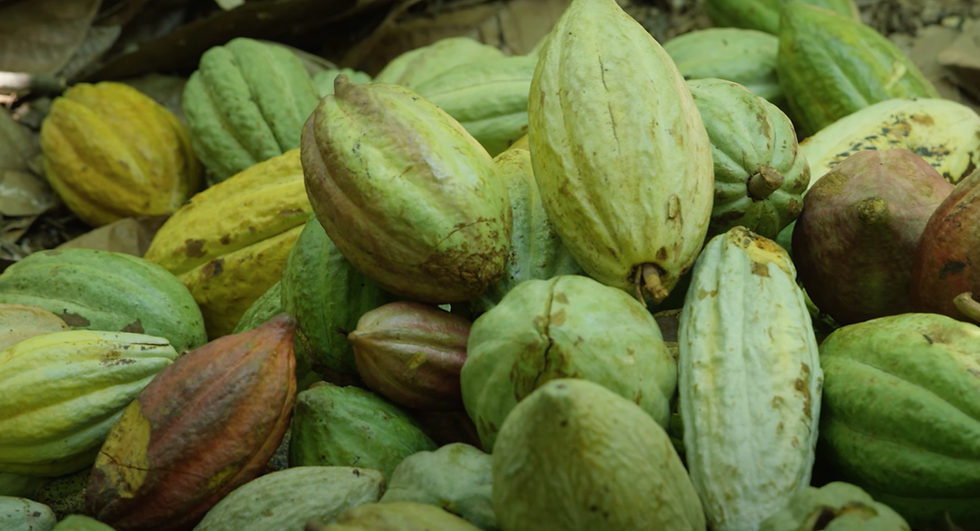Camindangan’s Coffee Revival is Brewing Prosperity
- Jul 18
- 3 min read
In the heart of Camindangan, Sitio Sipalay, a transformation is underway—one that feels part David vs. Goliath, part agricultural alchemy. Not so long ago, coffee trees were felled and burned for firewood: the dream of a sustainable coffee industry had withered under the weight of low prices and distant markets. Yet today, that same community is brewing a revival that’s redefining rural resilience.

An origin in failure
Leonorina Tabat confesses that she almost gave up on coffee. As the treasurer of CAPFWA (Camindangan Planters and Farm Workers Association), she thought the whole industry had collapsed. Transporting beans to Bacolod felt like climbing Everest. And making a buck for it was just impossible.
Traders dictated everything. For years, farmers watched distant traders set rock-bottom farm-gate prices. Coffee wasn’t just unprofitable—it was emotional labor that drained pride.

Negros’ gaping coffee deficit and a spark of hope
Negros Occidental guzzles over 4,070 metric tonnes of coffee annually—but local production supplies only 650 MT, leaving a yawning 84% gap.
No wonder CAPFWA members once ripped out their trees, turning fertile land into charcoal kilns.
Yet out of the ashes comes opportunity—if you call yourself a farmer, end of story. In 2020, CAPFWA, founded in 2014, refocused exclusively on coffee. They birthed the CHICKS Area Coffee Processing & Marketing Enterprise, uniting municipalities into a powerful cooperation.
Check out these links for related matters:

The grind begins: reclaiming value, one bean at a time
By 2023, green was back on the radar. One proud member reported harvesting 2,000 kg of beans and pocketing ₱600,000—a windfall previously deemed impossible. Today, 90% of CAPFWA’s 300+ households cultivate robusta on 500 hectares, with each tree yielding 1 kg per year.
What’s changed? CAPFWA now controls everything: from the harvest to post-processing, packaging, and pricing. A kilo of roasted beans fetches ₱700, while drip packs go for ₱180 per ten-pack.

Processing power: turning beans into business
Late 2024 saw the CHICKS enterprise take over a ₱15 million state-of-the-art facility, financed through the DA’s PRDP—with support from the World Bank and provincial government. This processing hub elevates Camindangan from subsistence-level bean production to regional competitiveness.
Before, dried beans were sold for ₱80–135/kg. Now farmers sell branded, packaged coffee directly in Bacolod and Metro Manila—with margins previously unseen.
Check ou these link for related matter:

Community payoff: livelihoods and future
CAPFWA president Richard Vallota said the days when middlemen call the shots are over. Now, the farmers can be involved in every step. This shift from raw bean selling to branded product marketing has injected income and hope into over 300 households. Coffee is no longer a back-up plan—it’s the main act.
Provincial data underscores the urgency: more than 2,500 ha across Negros are dedicated to coffee, with 4,500+ local growers. But production lags. Initiatives like CHICKS aim to narrow the 84% supply gap and flip farmers from subsistence to agripreneurs.

A blueprint for agricultural renaissance
Camindangan’s coffee story isn’t just local folklore—it’s rural development in action. With premium beans, processing infrastructure, and market access, they’ve sparked a ripple effect. The DA's success with PRDP-funded infrastructure—in Negros, Kalinga, Amadeo—proves this model scales.
Their processing facility wasn’t just an upgrade—it was a statement. Imagine a village that once burned coffee trees now roasting, packaging, and shipping its own beans to the capital. The economic liberation is palpable.

What’s brewing next?
As CAPFWA’s facilities hit full stride in 2025, the possibilities are stewing:
Local entrepreneurship: Value-added products—premium blends, instant mixes, artisanal roasts. Imagine “Camindangan Crème” drip coffee.
Export potential: Bacolod Coffee Fiesta and Philippine Coffee Expo already opened doors for export collaborations
Agricultural spillover: Diversified crops, agro-tourism, training hubs in sustainable practices—coffee as the crown jewel anchoring broader development.
Lessons from the brew
Organize and unite – CAPFWA’s shift from farming association to enterprise unlocked collective power.
Invest in processing – Infrastructure turned commodity beans into branded products.
Control the chain – From harvesting to pricing, ownership meant stability and income.
Link to market – Access to Bacolod and Manila consumers brought sustainable demand.
Final sip: hope freshly brewed
Camindangan has reclaimed its coffee story from tragedy. What was once burned, abandoned, and undervalued is now a beacon of rural renaissance. These 300+ households are not just farmers—they are entrepreneurs, brand builders, and architects of their own futures.
Their brew is more than a beverage—it’s a testament. With unity, infrastructure, and market strategy, the impossible becomes profitable. And in Camindangan, prosperity is rising—hot, fresh, and flavorful—one cup at a time.















